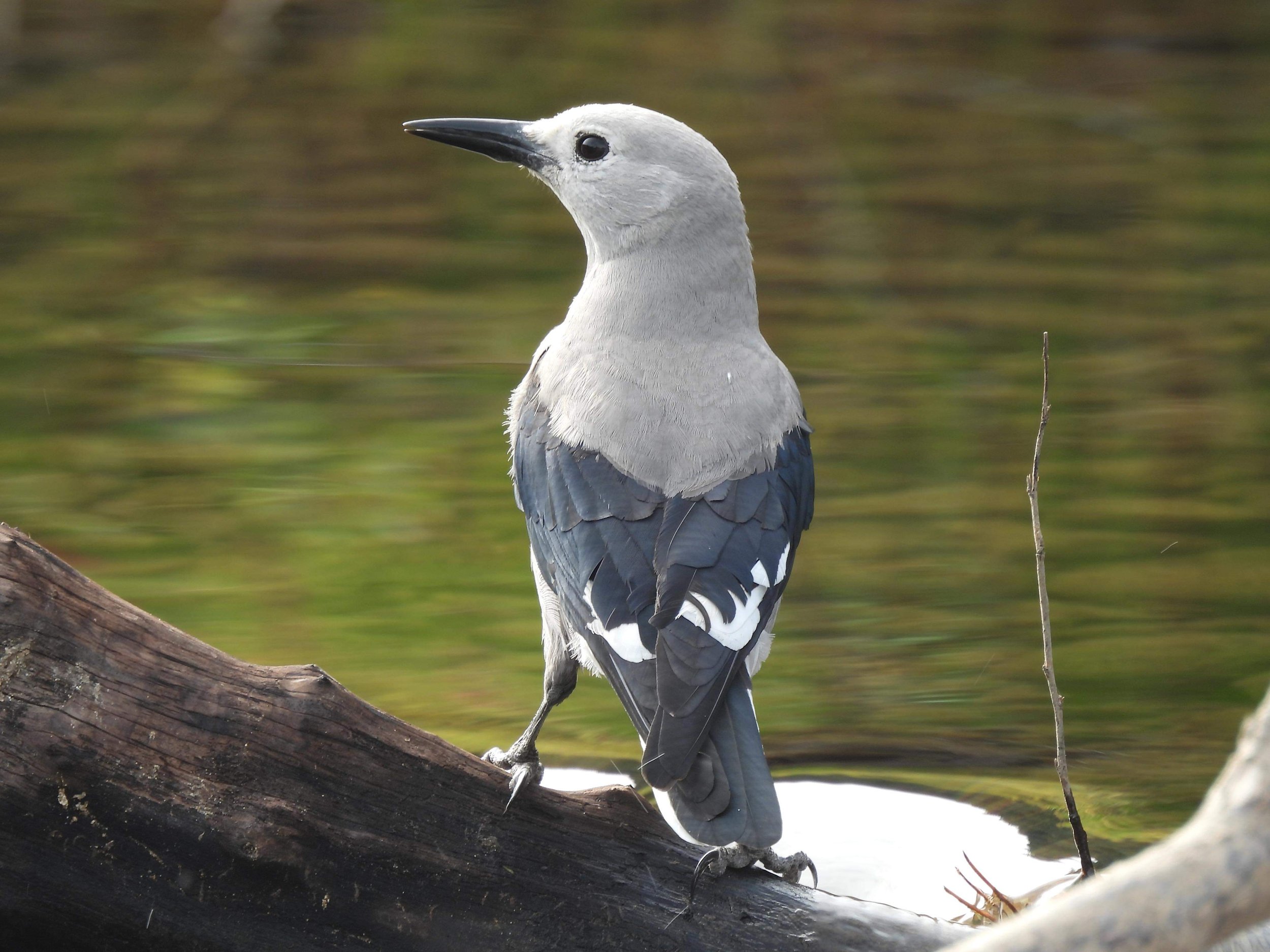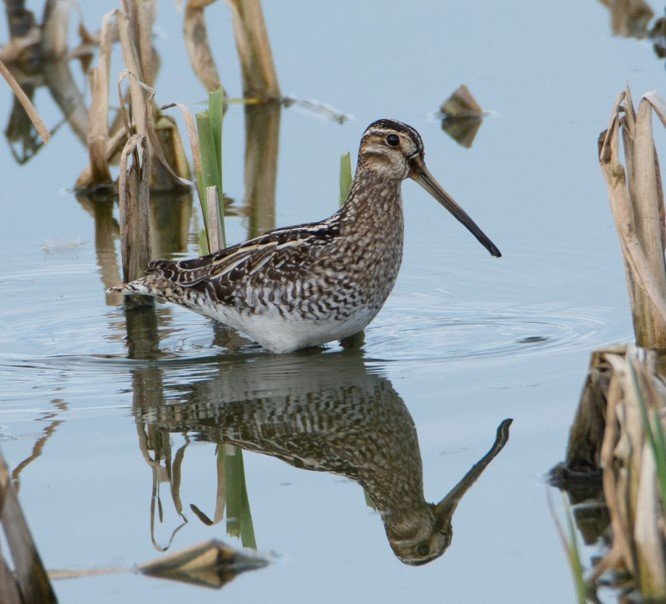New Bird Names Coming
By Terry Rich, Golden Eagle Guest Blogger
The American Ornithological Society (AOS) is the scientific authority for bird names within its geographic jurisdiction. The AOS recently announced that it will change all English bird names currently named after people. This is part of a larger initiative to become more inclusive and to engage more people in the enjoyment, protection, and study of birds.
According to the AOS, “Ornithologists have long grappled with historical and contemporary practices that contribute to the exclusion of Black, Indigenous, and other people of color, including how birds are named.” For example, in 2020, the AOS renamed McCown’s Longspur the Thick-billed Longspur. The bird’s original name honored John P. McCown. He was an amateur naturalist who later became a general in the Confederate Army during the U.S. Civil War. His link to slavery and racism was judged to no longer be tolerable.
The AOS decided it was not possible to cherry pick names to change – they will all be changed – starting with 70-80 species which occur primarily in the U.S. and Canada.
Public Process to Select New Names
This decision has generated a lot of controversy. Some believe we should not judge the behavior of people in the 1700s or 1800s by today’s standards. Others argue simply that we lose a part of our history by removing people from our bird names. But the AOS has made the decision, and the process will move forward, beginning in 2024.
The AOS will also change the process by which English names are selected for bird species. This is only the fourth change to the way it and its predecessor organizations (the American Ornithologists’ Union and Cooper Ornithological Society) have operated since the 1880s:
1) All English-language names of birds within its geographic jurisdiction named after people (eponyms), along with other names deemed offensive and exclusionary, will be changed.
Lincoln’s sparrow by Mary Miller Rumple
2) A new committee will be formed to oversee the assignment of these names. This committee will broaden participation by including a diverse representation of individuals with expertise in the social sciences, communications, ornithology, and taxonomy.
3) The AOS will actively involve the public in the process of selecting new names.
The new process could hardly be more different from the old one. In the past, naming followed a detailed and esoteric process implemented by a relatively small group of ornithological experts in taxonomy. It will be interesting to see both how it works out, and how other scientific societies – mammalogists, herpetologists, botanists, and many others – react.
There are more details to the renaming process which you can find at the AOS website (https://americanornithology.org/). There have also been numerous reposts and opinions on this initiative published in various places. A web search will quickly bring these up.
Colorful New Names for Idaho Birds
Most aspects of our society are socially constructed. They did not fall from the sky. We will end all this with many new bird names. My hope is the new names will be colorful and interesting. Many birds we find in Idaho will get new names. Let’s take a look at some of them. And because we may all be involved, I’m going to put my own choices for new names right here, right now! You have time to think about what names you would choose, and they might become real! And, if you like, please share your names with me.
You can reach Terry at terryrichbrd@gmail.com
Clark’s Nutcracker. This species was described by the Lewis and Clark expedition, with William Clark (1770-1838) first observing it in 1805 along the banks of the Salmon River. We also have Clark’s Grebe, described much later. Terry’s suggested name – Columbia Nutcracker.
Barrow’s Goldeneye. Sir John Barrow (1764-1848) was a British geographer, linguist, writer, and civil servant. An alternative name from Europe is the Icelandic Goldeneye. I like it.
Cooper’s Hawk. This accipiter was named after ornithologist and naturalist William Cooper (1798-1864), who was actually a conchologist. Because this species is a most successful bird predator across the country, I love the colloquial name, Striker!
Clark’s Nutcracker by Mary Miller Rumple
Swainson’s Hawk and Swainson’s Thrush. William John Swainson (1789-1855) was another British scientist and naturalist. Swainson’s hawk should become Locust Hawk, due to its fondness for grasshoppers year-round, and Swainson’s thrush, Mosquito Thrush, due to its flycatching habits.
Wilson’s Snipe by Louisa Evers
Wilson’s Snipe, Wilson’s Phalarope, and Wilson’s Warbler. There is also the Wilson Ornithological Society, one of only a few major scientific ornithological societies in North America. Alexander Wilson (1766-1813) was an ornithologist as well as a poet, naturalist, and illustrator. The snipe could become Moor Snipe, the phalarope Inland Phalarope, and the warbler, the Thicket Warbler.
Anna’s Hummingbird. Anna's Hummingbird was named by a French ornithologist, René Lesson, after the Duchess of Rivoli, Anna de Belle Masséna. This is an easy one – Raspberry-headed Hummingbird!
Lewis’s Woodpecker. How about the other half of the Corps of Discovery, Meriwether Lewis (1774-1809)? This is another gimme - Pink-bellied Woodpecker.
Williamson’s Sapsucker. This woodpecker was named by ornithologist John Cassin (we’ll deal with him next) after Robert Williamson (1825-1882), who led survey expeditions throughout the western U.S. Based on numerous historical accounts, I’ll support Black-breasted Sapsucker.
Cassin’s Finch and Cassin’s Vireo. Remember, you can’t name birds after yourself. So, having multiple species named after you means you have been honored by others. Cassin (1813–1869) was an ornithologist who published several books and described 194 new species of birds. He died in 1869 of poisoning caused by his handling of bird skins preserved with arsenic. For the finch, how about Montane Finch? And for the vireo, xxx.
Hammond’s Flycatcher. William Alexander Hammond (1828-1900) was the 11th Surgeon General of the U.S. Army and collected bird specimens for Spencer Fullerton Baird (more on Baird later). This flycatcher was named after Hammond by John Xantus (Xantus’s Hummingbird) who worked under Hammond as an assistant surgeon. How about calling it by its German name, Tannenschnäppertyrann?
Next up is Steller’s Jay. As by far the most commonly seen jay in our area, this is a cool bird for me. Georg Wilhelm Steller was a German botanist, zoologist, physician, and explorer, who worked in Russia and was a pioneer in Alaskan natural history. How about a perfect colloquial name, Long-crested Jay?
Bewick’s Wren has been increasing in our area over recent years. This wren was named by no less than John James Audubon for his friend, Thomas Bewick, a British natural history author and wood engraver. Bar-tailed Wren.
Townsend’s Solitaire and Townsend’s Warbler. The solitaire is another species named by Audubon, in this case for John Kirk Townsend. The warbler was named for Townsend by Thomas Nuttall. Mountain Solitaire and Black-eared Warbler.
Steller’s Jay by Krispen Hartung
MacGillivray’s Warbler. Here is another species named by Audubon, in this case for a Scottish friend, William MacGillivray. Skulky Mountain Warbler.
Brewer’s Sparrow and Brewer’s Blackbird. These species were named after Thomas Mayo Brewer, yet another physician who took a keen interest in ornithology. In fact, he was so interested in birds he gave up practicing as a doctor. Who does that? The sparrow is definitely Trilling Sparrow, and the blackbird, Blue-headed Blackbird.
Lincoln’s Sparrow. Here is yet another species named by Audubon, this time after his friend, Thomas Lincoln. After their expedition to Labrador in 1833, Audubon wrote, “we found more wildness in this species than in any other inhabiting the same country.” I like Buff-banded Sparrow.
Bullock’s Oriole. This oriole and the Baltimore Oriole were combined into a single species, the Northern Oriole, in 1983. After further research, they were split again in 1995 due to the differences in appearance and behavior. Bullock’s Oriole was described by Swainson and named after William Bullock and his son, also William, who collected specimens. Black-throated Oriole.
Bonaparte’s Gull by Pat McGrane
Gulls
While all the gulls on this list are lovely, Sabine’s gull may be the most beautiful on earth. Edward Sabine was an Irish astronomer, geophysicist, and ornithologist. Fork-tailed Gull.
Bonaparte's gull honors Charles Lucien Bonaparte, a cousin of Napoleon Bonaparte who made substantial contributions to American ornithology during the 1820s. Fun fact: He created the genus Zenaida, after his wife, Princess Zénaïde, for the Mourning Dove and its relatives. Taiga Gull.
Ross’s Gull was named for the British explorer, James Clark Ross. He explored both the Arctic and Antarctic and gets credit for finding the north magnetic pole. Collared Gull.
Franklin’s Gull was named for another Arctic explorer from Great Britain, Sir John Franklin. And if you think Arctic exploration was a picnic, because so many people did it, please check out two of the most gripping books I have ever read – In the Kingdom of Ice by Sides (2015) and Farthest North by Nansen (1999). The end of Franklin’s story is yet another riveting tale. Prairie Gull.
Heermann’s Gull. This gull was named after Adolphus Lewis Heermann, an American doctor, naturalist, ornithologist, and explorer Beautiful Gull.
Forster’s Tern. This is the only tern, among about 40 species on earth, restricted almost entirely to North America. It was named for Johann Reinhold Forster, a Scottish naturalist who contributed to the early knowledge of birds in Europe and North America. Forster (1729 – 1798). Going against my general dislike of geographic descriptors, North American Tern.
Vaux’s Swift. Most of us have spent much more time on the pronunciation of “Vaux” than on the man himself. If you’ve taken French, you’d guess it was pronounced, Vo, with a long O, but William S. Vaux pronounced his name “vox” (like fox). Vaux (1811–1882) was a member of the Academy of Natural Sciences of Philadelphia. Agile Swift.
Virginia’s Warbler. This warbler was named by Spencer Fullerton Baird for Virginia Anderson, the wife of the man who first discovered and collected the species, Dr. William Wallace Anderson. Pinyon-Juniper Warbler.
Harris’s Sparrow. This beautiful bird was named for Edward Harris, another companion of John James Audubon. Audubon also gave him Harris’s Hawk of the southwestern U.S. Black-fronted Sparrow.
Harris’s Sparrow by Pat McGrane





